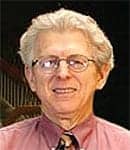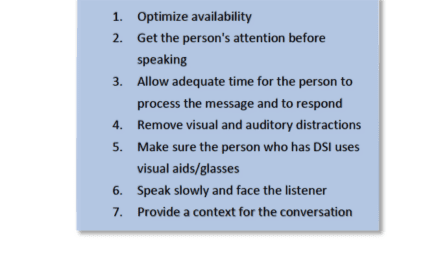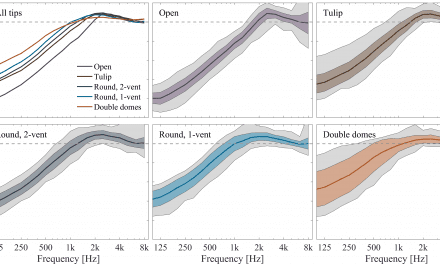An approach for calculating noise exposure limits and placing noisy environments in perspective.
Noise exposure and the hearing loss incurred from it have been a concern since at least the 1940s, yet even as the years (and legislation) have passed, it is still not understood by the majority of people who are affected by it. Part of the confusion lies in the use of the decibel scale; it is hard to perform the necessary calculations unless you have either years of experience or a calculator.
Therefore, a different way of looking at noise exposure is being proposed that uses units of Pascals-squared-seconds—or Pasques—as the limits for sound exposure (SE). Pascals are the metric unit for pressure; 14.7 pounds per square inch equals 101,353 Pascals. This use of SE as the metric has been suggested for day-night sound exposure near airports,1 but extra benefits come from applying it to industrial noise control.
ANSI Standard S3.44-19962 defines SE in Pasques. The squared pressure can be calculated from the sound pressure level through Equation 1:
Pexp2 = 10(Lp/10) x Pref2
Where:
Pexp2 is the square of the exposure sound pressure, in Pa2;
Pref2 is the square of the reference sound pressure 20 µPa, Pa2, and
Lp is the sound pressure level, in dB.
The SE is then calculated by Equation 2:
SE = (Pexp2) x length of exposure in seconds
With this approach, it is simple to calculate the noise dose a person has received. Table 1 presents the 1-second sound exposure for sound levels from 80 dB to 100 dB.
Advantages of SE Method
There are many advantages to using this method for determining sound exposure. First, expressing the sound exposure in a unique unit, as opposed to in dB per 8 hours, provides flexibility in the calculations. Instead of interpolating the sound exposure from information in OSHA tables, the exact exposure of a worker can be determined.
Additionally, irregular noises can be included in calculations. Occupational Hearing Conservationists (OHCs) and/or workers can calculate exposures using simple arithmetic. For example, Table 2 identifies the sound level to which a worker is exposed in the left column; the second column identifies the length of time the noise exposure lasts; the third column converts the length of exposure into seconds; the fourth column presents the 1-second SE (in Pasques) for that sound level; and the fifth column provides the SE for that length of time. These individual SEs can be summed to give the SE for the worker on that day.
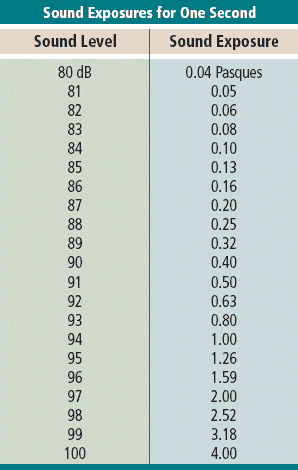
TABLE 1. A table for calculating sound exposure (SE) received from a 1-second noise. The SE for 80 dB for 1 second is 0.04 Pasques, so for 10 seconds of exposure it is 0.4 Pasques. For 8 hours (8 hrs x 60 minutes/hr x 60 seconds/minute), a 80 dB sound exposure is 1152 Pasques. If the level were 10 dB higher, the exposure would be 10 times as much. (For simplicity, the values in this table are rounded; see online version of article for 7-digit accuracy.)
Workers or OHCs could track the amount of noise a worker receives over his or her lifetime by adding the sound exposure linearly—much simpler and more intuitive than working in decibels. In the same way that dieters count their calories until they have reached their quota for a day, concerned workers could count their sound exposure over their working lifetime until they reach a limit past which hearing loss is probable.
The question arises with the new units of Pasques, “What should be the limit for lifetime noise exposure?” The first step in this calculation is to look at previous standards and recommendations. NIOSH recommends 85 dBA as an 8-hr TWA for a 40-year working lifetime to reduce the risk of noise-induced hearing loss.3 The OSHA limit is 90 dBA for an 8-hour duration per day.4 Finally, the EPA recommends a level of 75 dBA over 8 hours to prevent all hearing loss,5 but a level of 80 dBA to ensure that only 5% of the population has a 5 dB threshold shift.6 Over an average working lifetime of 40 years, these levels, in Pasques, are shown in Table 3.
Bruce et al7 proposed defining 1 Lifetime Occupational Noise Exposure (1 LONE) as 11.5 million Pasques. Table 4 presents the yearly unprotected noise exposure (in worker hours/minutes) that it would take to reach 1 LONE in 40 years at different sound levels.7
Occupational hearing conservationists, hearing care professionals, and workers are concerned about hearing loss induced by noise. Looking at SE in terms of Pasques is a simple way to reinforce the importance of proper hearing protection, annual audiometric evaluations, noise surveys of facilities, and proper record keeping.
The overall goal of this paper is to foster a better understanding of and further protection from hearing loss. Using this method, it is possible for non-acousticians to figure out how risky a job really is. Remembering that 90 dB for 1 second = 0.4 Pasques and knowing that the sound exposure is based on a 3 dB doubling, you can approximate 87 dB to be ½ the exposure at 90, so it is about 0.2 Pasques. From these rules of thumb or from Table 1, you can calculate sound exposure if you know the length of time worked in seconds and the sound level in dB. In this way, you can determine how dangerous a work environment is for unprotected ears.
Acknowlegements
This article originally appeared in the Summer/Fall 2010 edition of CAOHC Update, the newsletter of the Council for Accreditation in Occupational Hearing Conservation (www.caohc.org). It appears here with permission.
Robert Bruce is one of the INCE representatives serving CAOHC. One of his recent contributions to acoustics is his work with the National Academy of Engineering (NAE) over the past 5 years where he served on the steering committee for the NAE initiative, “Technology for a Quieter America.” Bruce’s focus was on exposure to hazardous noise. In the area of workplace noise, the report recommended reducing occupational noise exposure limits, requiring engineering controls, and recommending “buy-quiet” programs. The report is available at www.nae.edu and at www.caohc.org.
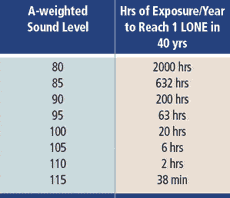
Table 4. Hours per year that an employee would be limited to relative to reaching 1 LONE (Lifetime Occupational Noise Exposure) in 40 years of employment at various sound levels.

TABLE 2. Sound exposure calculation in a day for a hypothetical worker (in Pasques).
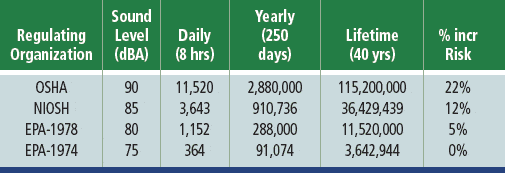
TABLE 3. Daily, yearly, and lifetime exposure sound exposure limits (in Pasques) for the four regulatory organizations shown and risk of hearing loss.
References
- Eldred KM. Sound exposure without decibels. In: Proceedings of Inter-noise 86: Progress in Noise Control. International Conference on Noise Control Engineering; July 21-23, 1986; Cambridge, Mass.
- American National Standards Institute (ANSI). ANSI S3.44-1996. Determination of Occupational Noise Exposure and Estimation of Noise-Induced Hearing Impairment. New York: ANSI; 1996.
- National Institute for Occupational Safety and Health (NIOSH). Criteria for a Recommended Standard: Occupational Exposure to Noise, Revised Criteria. Atlanta: NIOSH; 1998.
- Occupational Safety and Health Administration (OSHA). Occupational Noise Exposure, 29CFR§1910.95. Washington, DC: OSHA.
- Environmental Protection Agency (EPA). Information on Levels of Environmental Noise Requisite to Protect Public Health and Welfare with an Adequate Margin of Safety. Washington, DC: EPA; 1974.
- Environmental Protection Agency (EPA). Protective Noise Levels, Condensed Version of EPA Levels Document [Report 550/7-70-100]. Washington, DC: EPA; 1978.
- Bruce RD, Bommer AS, Lefkowitz KA, Hart NW. Safe Lifetime Occupational Noise Exposure—1 LONE. In: Proceedings of NOISE-CON 2010. Baltimore; April 19-21, 2010.
Citation for this article:
Drott ES, Bruce RD. A different look at noise exposure, hearing loss, and time limits. Hearing Review. 2011;18(5):34-36.

